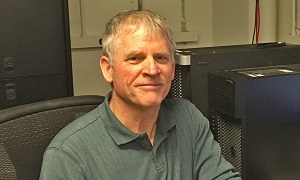Making the Case for Using Computer Simulations to Gauge Spectrum Interference
As demand for spectrum for commercial use continues to grow, policymakers are exploring spectrum sharing as a way to expand capacity while still fulfilling the needs of federal agencies. This model can work only if rules are designed to maximize the value of spectrum resources without compromising the quality and reliability of telecommunications.
To minimize the probability of interference, spectrum managers separate systems in distance and frequency. The amount of separation is determined by interference protection criteria (IPC), which can be estimated through analysis, measurement, or computer simulation.
Although the analytic method is fast it can also be highly inaccurate. Accurate and repeatable measurements may also be difficult to obtain. One reason is that IPC measurements are often hindered by restrictions on equipment availability. In some cases, spectrum managers need estimates for systems that have not been built yet, so measurements are not possible. In other cases, the systems can only be tested for a brief period of time to avoid service interruptions.
To overcome the limitations of measurement, NTIA’s Office of Spectrum Management and Institute for Telecommunication Sciences (ITS) have made significant investments in computer simulation capabilities. This has provided a tool to use when measurements are not possible, especially when trying to assess a multitude of spectrum sharing scenarios. ITS is NTIA’s spectrum engineering laboratory.

Today, Robert Achatz, a researcher with ITS, presented a paper at the 2018 IEEE Radar Conference in Oklahoma City describing NTIA’s ground-breaking work to emulate IPC measurements through computer simulation. The research paper, “Interference Protection Criteria Simulation,” describes work jointly funded by ITS and OSM to improve existing and develop new methods for estimating IPC. The findings demonstrate that simulations can provide much needed verification of measurement results, and could potentially provide more accurate and timely IPC estimates in the future.
The simulation approach is based on emulating the same systems and equipment used in a traditional measurement test fixture, including the victim transmitter and receiver, interfering transmitter, and the various laboratory instruments. The software is capable of emulating most of the radio systems involved in today’s spectrum sharing options, such as radars, satellite communications, global navigation satellites, tactical mobile communications, Wi-Fi, and LTE cellular systems.
The research is part of a multitude on ongoing efforts at ITS to enable data-driven regulatory innovations to increase spectrum utilization, making more spectrum available for commercial use and emerging technologies.
